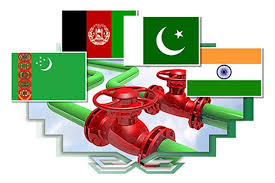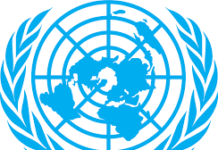Monitoring Desk
As Turkemistan-Afghanitan-Pakistan-India (TAPI) gas project enters first phase of its execution in September , China has expressed its interest in building a spur from Pakistan’s territory over natural gas pipeline.
The pipeline at starts at Galkynysh gas field in Central Asian state of Turkmenistan, the $9.6-billion TAPI (Turkmenistan, Afghanistan, Pakistan, and India) pipeline involves the four countries’ own energy companies and would carry 33 billion cubic metres (BCM) of gas a year, according to a media report published on Thursday.
Turkmenistan is building the TAPI pipeline to diversify its gas exports to South Asian nations, which have mostly gone to China. But the project has suffered delays due to difficulties obtaining financing and the security risks of building a pipeline through war-torn Afghanistan.
Reuters news agency has quoted Mobin Saulat, the chief executive officer of Pakistan’s state-owned Inter State Gas Systems (ISGS) as saying that Chinese officials have shown growing interest in building a spur from Pakistan and the line could act as an alternative to Beijing’s plans to build a fourth China-to-Turkmenistan pipeline.
“With this channel, there is a possibility they don’t have to do another line and they can off-take from this pipeline which is passing through Pakistan,” Saulat said.
A China-to-Turkmenistan line has to cross several Central Asian mountain ranges and Saulat said it would be cheaper and easier for China to build a line from inside Pakistan’s territory to cross the Karakoram range to its Western border.
China’s ties to Islamabad have deepened in recent years as Beijing has pledged to fund $57 billion in infrastructure as part of its Belt and Road (OBOR) initiative, including power stations and transport links.
Facing more delays, TAPI countries have changed tack to attract financing and make progress in the past two years. The project is now due to be done in two phases, with the pipeline built without compressors in the first phase, which would cut gas volume but would reduce prohibitive project costs.
Once gas starts flowing, and the pipeline begins generating cash flow, financing would be raised for the second phase that would see 11 compressors installed along the 1,814 kilometres (1,127 miles) pipeline project.
“With this introduction of the phased approach, it has gained momentum with the Chinese,” said Saulat.
The financial close for the first phase is due by the end of September, Saulat said, with the Asian Development Bank (ADB) promising $1 billion to $1.5 billion and the Islamic Development Bank giving assurances of $1 billion in loans.
(Reuters News agency’s story was initially published in various newspapers of Pakistan)















